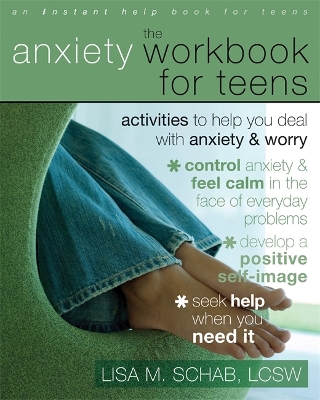Instant Help Book for Teens
4 total works
This professional edition includes both the Instant Help book and a companion CD that offers the complete book and printable worksheets for your clients.
I
t's tough being a teen even in the best of circumstances, but when parents divorce teens are faced with an additional set of practical and emotional issues. This book gives them everything they need to get through their parents' divorce and keep it from taking a long-term emotional toll. Teens learn how to:
cope with the grief, fear, and anger that accompany divorce; adjust to having two homes and changes in financial status; assert their right to be teens, to separate from their parents' problems, and to love both parents; not get caught in the middle of battling parents; understand that the divorce is not their fault and overcome feelings of guilt.
Research tells us that teenagers in single-parent families and in blended families are 3 times more likely to need psychological help and that boys are more likely to become aggressive and girls are more likely to experience depression as a result of divorce. While this sounds like a grim picture, it's important to remember that there is help and that divorce need not leave a painful legacy. The Divorce Workbook for Teens helps teenagers come through their parent's divorce emotionally and psychologically intact.
Despite what you might have been told, the feelings of sadness and hopelessness you may be struggling with are probably not "just a phase" or "something you'll grow out of." As many as 20 percent of people your age have symptoms of serious depression, yet many teens and even many adults don't recognize the signs. Only half of depressed teens get the help they need to overcome these feelings. If you're feeling depressed, this workbook offers things you can do, both on your own and with a counselor, to feel better.
The activities in Beyond the Blues can help you cope with sad and difficult feelings, find new ways to make friends, and deal with conflicts. Little by little and on your own schedule, you can make small changes in your life that will lead you to a brighter, more enjoyable future.
As a teen, it is incredibly important to have self-confidence, especially when you consider societal pressures about appearance and grades. Just growing up is difficult in and of itself, and in the midst of all this life-related stress, you may not be seeing yourself clearly. In fact, you may be magnifying your weaknesses and minimizing-or even ignoring-your true assets.
Psychologists believe that low self-esteem is at the root of many emotional problems. When you have healthy self-esteem, you feel good about yourself and see yourself as deserving of the respect of others. When you have low self-esteem, you put little value on your opinions and ideas, and may find yourself fading into the background of life. Without some measure of self-worth, you cannot accomplish your goals.
In The Self-Esteem Workbook for Teens, you will learn to develop a healthy, realistic view of yourself that includes honest assessments of your weaknesses and strengths, and you will learn to respect yourself, faults and all. You will also learn the difference between self-esteem and being self-centered, self-absorbed, or selfish. Finally, this book will show you how to distinguish the outer appearance of confidence from the quiet, steady, inner acceptance and humility of true self-esteem.
The book also includes practical exercises to help you deal with setbacks and self-doubt, skills for dealing with criticism, and activities that will aid in the development of self-awareness, self-acceptance, and self-worth. With the right amount of self-confidence, you will have the emotional resources you need to reach your goals.

